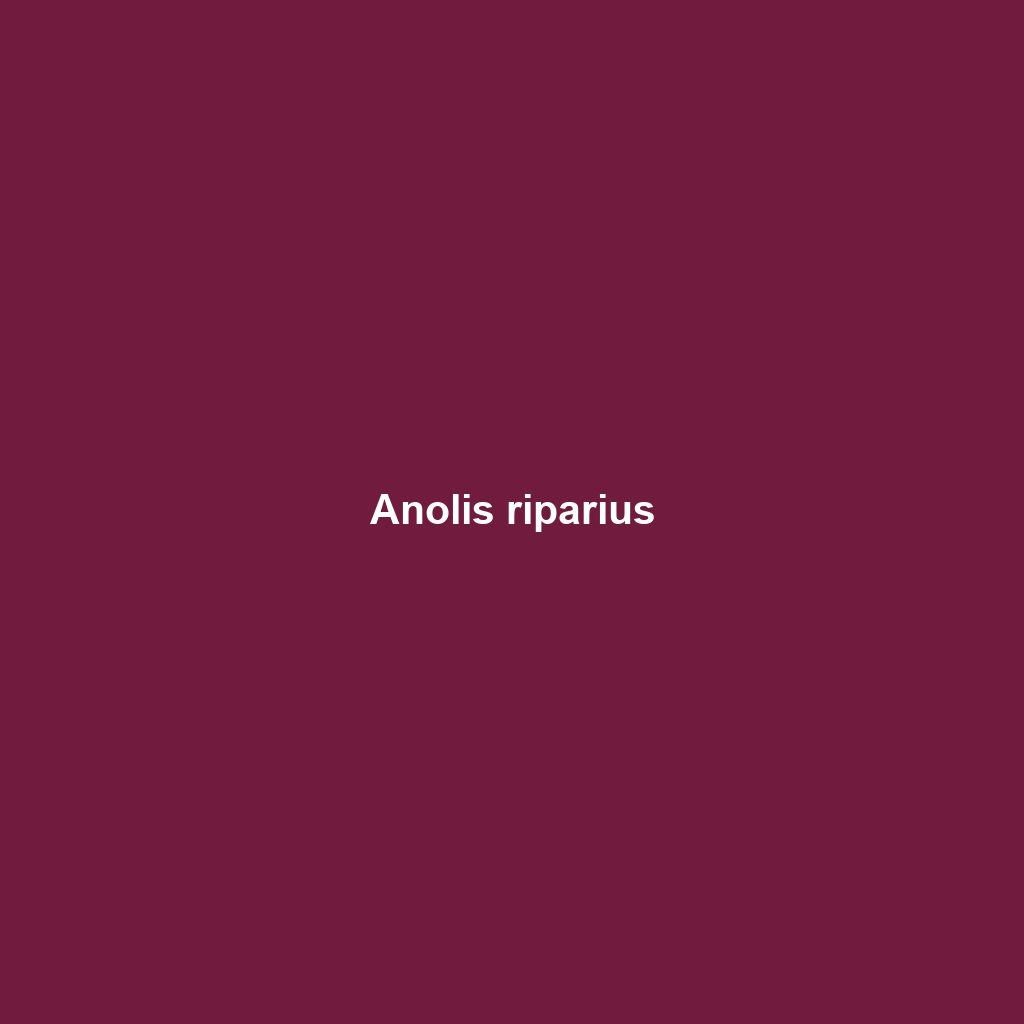Anolis riparius – Species Description
Common Name: Anolis riparius
Scientific Name: Anolis riparius
Habitat
Anolis riparius is primarily found in the lush tropical environments of the Caribbean, particularly on the islands of Cuba and Jamaica. This species thrives in habitats such as moist forests, mangroves, and disturbed areas near human settlements where vegetation provides ample cover and basking spots.
Physical Characteristics
Adult Anolis riparius typically reaches a size of 5 to 9 inches in length, including their distinctive long tails. Their coloration varies from vibrant green to brown, aiding in camouflage among leaves and branches. This species exhibits a dewlap—a flap of skin under the throat—which is critical for communication and mating displays. Males usually boast more pronounced dewlaps compared to females, further differentiating the sexes.
Behavior
Anolis riparius is known for its territorial behavior, particularly during the mating season when males will engage in head bobs and push-ups to assert dominance. This species is arboreal, spending much of its time basking in the sun on branches or leaves and utilizes its climbing abilities to evade predators. They are also known for their quick, agile movements and can remain motionless to blend into their surroundings.
Diet
The diet of Anolis riparius primarily consists of insects, including flies, crickets, and beetles. This species is an insectivore and employs various hunting strategies, such as ambushing and actively foraging. Their feeding habits are crucial for controlling insect populations within their ecosystems.
Reproduction
Anolis riparius typically breeds during the warmest months of the year, with males displaying their vibrant dewlaps to attract females. After mating, females lay eggs in moist substrates, commonly near tree roots or among leaf litter. The eggs incubate for several weeks before hatching, producing young lizards that are independent from birth.
Conservation Status
Currently, Anolis riparius is classified as “Least Concern” according to the IUCN Red List. However, habitat destruction and climate change pose potential threats to their populations, necessitating continued monitoring and conservation efforts to safeguard their future.
Interesting Facts
One fascinating aspect of Anolis riparius is its ability to change color based on its environment and mood, much like a chameleon. This adaptability not only aids in camouflage from predators but also plays a role in social interactions among individuals. Additionally, Anolis riparius is known for its unique vocalizations, which are used during mating rituals.
Role in Ecosystem
As both a predator and prey, Anolis riparius plays a vital role in its ecosystem. By feeding on insects, it helps regulate pest populations, while also serving as a food source for larger predators, such as birds and snakes. Its presence indicates a healthy habitat, making it an integral part of the tropical forest food web.
